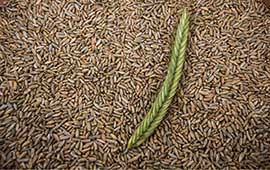Rye is a grain crop that is mainly grown only in the Northern Hemisphere, since it is here that the optimal natural conditions are created for it.
This crop is used for making bread, kvass, flour, starch and alcohol, and is also a valuable green manure that prepares the soil for greater yields. The fresh stems of this crop are used as forage. For many years in a row, the yield of rye has been especially high in the EU countries, where this crop is grown not only for domestic use, but also for export to other countries. Accordingly, it is Europe that becomes the main trading partner of other countries in this culture.
What factors affect the yield of rye
In order to obtain a good yield of rye, it is important to cultivate the field three times, with a gradual decrease in the cultivation layer. There are two types of this plant: winter and spring, respectively, this crop can be grown in winter, and it will become an excellent green manure – the predecessor of other crops, for example, wheat. Rye effectively fights insects and spores of dangerous diseases in the ground. This crop can be harvested as early as two months after planting. A sufficient amount of precipitation is important for the harvest – in this case, the seeds can be embedded shallowly into the ground. At the same time, in the absence of water, this culture also grows well, only the farmer should make sure that the grains are embedded to a great depth.
This culture grows well on infertile soils, which allowed the EU countries to become the leaders in the production of rye in the world.
Rye yield in 2020
Due to the coronavirus pandemic and an unprecedented drought, rye yields around the world have fallen sharply. However, in Europe, the yield of this crop remained high, which allowed EU countries to trade rye with other countries. Note that according to statistics, domestic prices in the EU have become lower so that this crop can be exported. By the way, domestic prices for rye in the EU are highly dependent on the cost of corn. The main suppliers of this crop were Latvia, Estonia and Poland, however, high yields of rye are traditionally observed in Germany (up to 3500 thousand tons in 2020), as well as Denmark (up to 725 thousand tons in 2020).
In addition, Europe introduced new requirements for trade in this crop, revising import duties, and leaving them at the level of 10.40 euros per tonne. The same price remains for corn and sorghum. Accordingly, in 2020, European farmers were able to trade more actively with other countries, increasing the supply of local rye.






